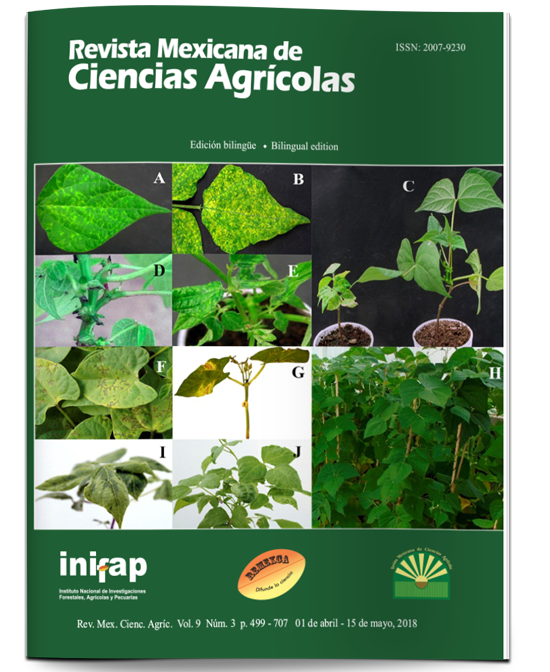In vitro germination of biznaga cabuchera
DOI:
https://doi.org/10.29312/remexca.v9i3.1226Keywords:
Ferocactus pilosus, H2O2, H2SO4, germination time, growth regulator, standard germinationAbstract
Ferocactus pilosus [(Galeotti ex Salm-Dyck) Werdermann] is a cactacea known as biznaga, which shows slow growth and is listed as a species at risk of extinction. The objective of the present study was to carry out an in vitro test in order to study the effect of chemical treatments and growth regulators, as promoters of seed germination collected in two consecutive years. The chemical products studied were H2SO4 and H2O2 and as the AG3, AIA and ANA phytoregulators, under different immersion and concentration times, respectively. The allocation of treatments was under a completely randomized design. For 30 days, the number of seeds germinated every 2 days was recorded and the standard germination was determined. Logistic regression was used to study the effect of the study factors on the proportion of germinated seeds. The standard germination of the biznaga is 82% with the H2SO4 treatment, while the germination of the seed starts between 2 and 6 days after sowing in both years and the representative logarithmic phase is between 8 and 20 days with H2SO4 in 2015. The biznaga seeds sampled in 2016 show greater slowness to cover the initial phase of germination, covered in 16 days. The application of H2SO4 shortened the germination time by 4 days and increased the standard germination by 82%, while the H2O kept the standard germination constant (±50%) and the germination response time was found between 6 and 10 days after the germination, planting in vitro.
Downloads
Published
How to Cite
Issue
Section
License
The authors who publish in Revista Mexicana de Ciencias Agrícolas accept the following conditions:
In accordance with copyright laws, Revista Mexicana de Ciencias Agrícolas recognizes and respects the authors’ moral right and ownership of property rights which will be transferred to the journal for dissemination in open access. Invariably, all the authors have to sign a letter of transfer of property rights and of originality of the article to Instituto Nacional de Investigaciones Forestales, Agrícolas y Pecuarias (INIFAP) [National Institute of Forestry, Agricultural and Livestock Research]. The author(s) must pay a fee for the reception of articles before proceeding to editorial review.
All the texts published by Revista Mexicana de Ciencias Agrícolas —with no exception— are distributed under a Creative Commons License Attribution-NonCommercial 4.0 International (CC BY-NC 4.0), which allows third parties to use the publication as long as the work’s authorship and its first publication in this journal are mentioned.
The author(s) can enter into independent and additional contractual agreements for the nonexclusive distribution of the version of the article published in Revista Mexicana de Ciencias Agrícolas (for example include it into an institutional repository or publish it in a book) as long as it is clearly and explicitly indicated that the work was published for the first time in Revista Mexicana de Ciencias Agrícolas.
For all the above, the authors shall send the Letter-transfer of Property Rights for the first publication duly filled in and signed by the author(s). This form must be sent as a PDF file to: revista_atm@yahoo.com.mx; cienciasagricola@inifap.gob.mx; remexca2017@gmail.
This work is licensed under a Creative Commons Attribution-Noncommercial 4.0 International license.



